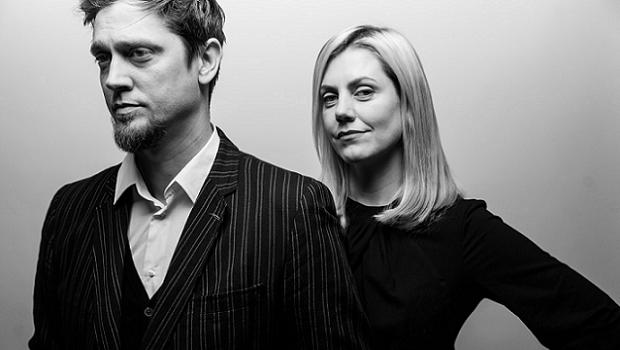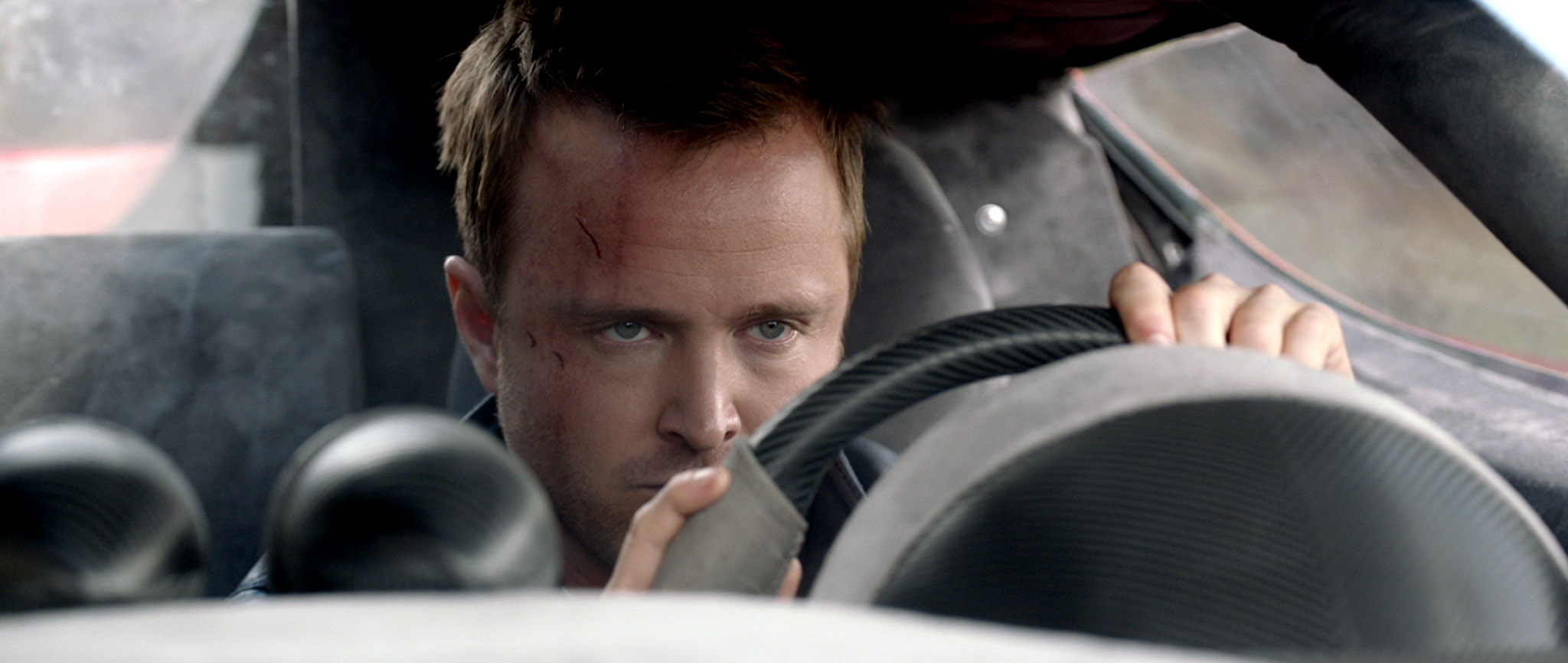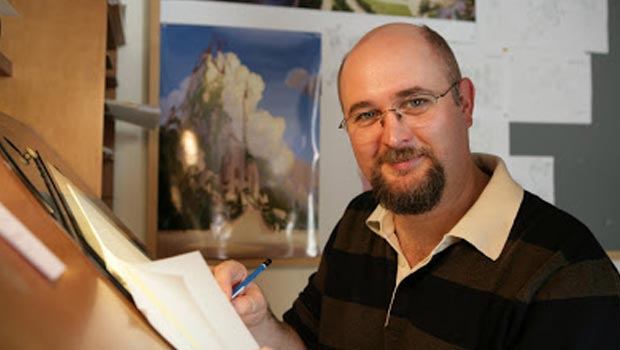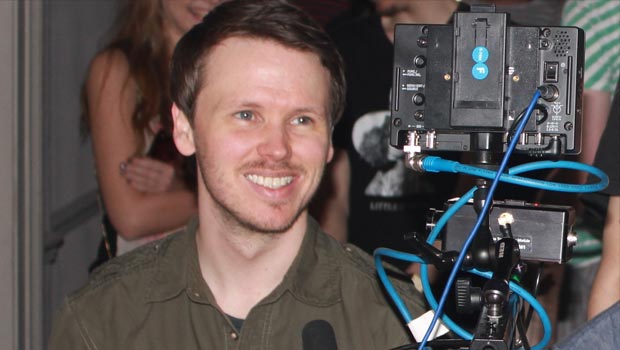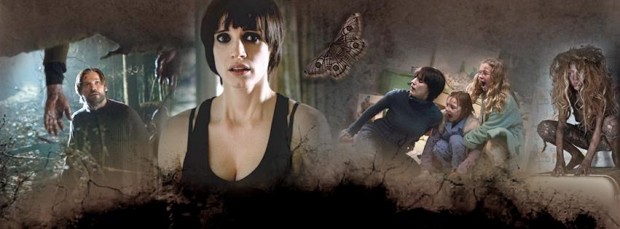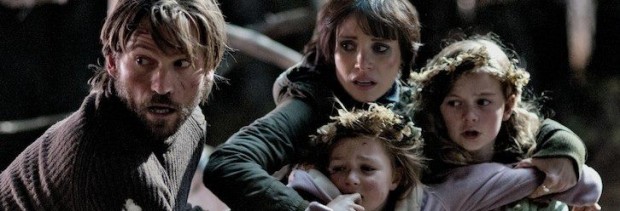Andrés and Barbara Muschietti, the sibling duo behind Mama, generously gave up a bit of their time to which was stretched a lot longer as they happily chatted about their first feature. They were comfortable and happy to speak about their movie in great detail as you’ll see below. They also promised extras on the DVD and Blu-ray which is out today in the UK. All of these extra scenes were cut to help pace it but you will discover that they reveal more about all the characters involved – including the ghostly villain, Mama.
Andrés and Barbara are so comfortable with each other that Andrés interjects in Spanish to tell his sister that she was using a verbal crutch too often to which she laughs and explains in English for me. It was a great dynamic, a free one that hopefully comes across. A dynamic filmmaking duo embarking on their journey thanks to their little short Mamá after it gained the attention of some chap going by the name of Guillermo del Toro. Read on and enjoy two people conversing openly about their film, filmmaking and Guillermo del Toro’s glasses.
First off, congratulations on Mama because you effectively scared me so much that, after seeing it, I went to brush my teeth and I heard a noise and couldn’t not look behind me. So thanks for making me paranoid!
Barbara Muschietti: [Laughs] We’re glad, we’re glad. That was the intention.
Andrés Muschietti: [Laughs] Yeah, mirrors are always tricky.
When you’re writing something like Mama, did the whole story come to you or was it more a case of having a horror idea for the scary character and developing from there?
AM: It all started with the short film. The central idea was the character. What motivated the whole writing of the story was expanding what there was in the short.
BM: Have you seen the short, Ashley? (If any haven’t you can scroll down to the end of the interview to watch it in full)
Yes, yes I have. I was actually going to ask were you extrapolating the short into a feature or condensing a feature into a short.
BM: It was pretty much extrapolating the short.
AM: The first step was to try to explain and to answer ourselves why that relationship was possible [laughs] because when I wrote the short film there was no story. It was just two little girls running away from a ghost and that ghost became their mother. That was the starting point – giving sense to what we had done before [laughs] and that was so intriguing to people. Why are they running away from her? Our first outline, our first treatment of the story didn’t have that chase [from the short] in the story because-
BM: Yeah, it wasn’t convenient for us to have it in the story. Then we had a meeting with Guillermo [del Toro], the first thing Guillermo said was ‘I’m helping you make this movie if you put it back in’ [laughs] ‘otherwise you’ll be in development for 10 years’ so we said ‘OK, we’ll put it back in.’
AM: It was a good thing as well because in our original outline Mama didn’t turn on the girls at all but the idea of putting it back was good because there’s a reverse in it which is very good, I think.
I watched the short and it seems the scene from the film is lifted from the short. It seems identical. Was it filmed in the same house?
BM: No, no.
AM: No, I wish it was identical because we shot the short film in a pretty ideal house which had that spiralling staircase. When we started shooting the movie, I noticed that I didn’t have enough money to build the whole house so basically I had to compromise with the house that was rigged for shooting. I didn’t have that spiralling staircase.
BM: Basically the house with the spiralling staircase was in Barcelona and it got flattened two weeks after we shot, literally. The house came down because the owners wanted to build a modern house. When we went to shoot the film in Toronto, we couldn’t find the ideal house. But you know it’s great, I still think it looks awesome.
AM: It’s still a good film. The funny thing is – this is an anecdote but (NB: anecdotes are the best!) – the upper part in the movie, the first floor, is a stage. The ground floor is location which wouldn’t be strange at all if it wasn’t because there is a one sequence shot that connects both places with no cuts. I don’t know if you remember that shot.
The short was a one sequence shot as well, wasn’t it?
AM: Well yeah, but it’s a bit tricky [laughs] because-
BM: It’s cheated!
AM: Yeah, cheated is the word. Especially when the camera goes down with the girls and there’s a couple of swish pans there. There’s a couple of cuts there, otherwise it would’ve been impossible to make it with the kids, the lighting, steadicam. It would’ve been impossible to make it as the real one and the same thing happens in the movie. In the feature film, there’s a pan where we seam both the stage and the location – so it’s seamless, you can’t notice… hopefully. [laughs]
Well I hadn’t noticed. I was going to bring up the use of one sequence shots throughout. You did bring that technique from the short to the feature as well. Was it your intention to use it as much as possible to add tension and not overdo it on the cutting table?
AM: I want to use the sequence shot as a style. You don’t abuse it. It has a very particular effect and that’s building up tension. I think in that sense it works perfectly because it’s the purest form to use to build up a tense scene. There are no cuts. In this case you’re following the character as he or she goes so basically you’re maintaining his or her point of view and you’re walking into the mouth of the wolf with them. It’s about storytelling, but it’s for building tension. It happens sometimes – you can’t use it all the time, right? Sometimes you have to wait for the character, cut to the inside of the room where the character is coming in but most of the time it’s better to come in with the character, right? The camera just behind them, you’re in the passenger seat with them, the victim.
When you were writing were there any sibling squabbles between to the two of you?
BM: [Laughs] Every scene. Every day! Nah.
AM: [Laughs] Especially at the end, I think after our first draft, in the little details where the bloodiest war battles took place.
BM: [Laughs]
AM: I am responsible for the story and structure, then Barbara comes in and starts ping-ponging ideas and split things. Then of course you have a lot of options when it comes to defining details, it’s war!
BM: [Laughs] We’re siblings. We’ve been together almost forty years. We know how to solve these very quickly. We fight and then a few minutes later it’s like nothing has happened. This is the difference of working with a writer or a partner. An argument means days of silence because the squabble hurts somebody’s feelings. We’re so used to bickering at each other [laughs] the conflicts never last more than a minute and a half.
Neil Cross has a writing credit on this as well. How much did he contribute to the writing process?
AM: Neil jumped in when the studio, distributor and Guillermo expressed their interest to imprint the female character with more protagonism instead of a family leading the action. Before it was a family against a supernatural threat and Guillermo and the distributor (Universal) agreed that the lead would be better if it was a woman. That’s when he suggested Neil come in and because we’re not native English speaking writers we thought it was also OK. We never met him when we were writing the movie because Neil lives over in New Zealand but we were very big fans of the series Luther, which he created, so we thought it was a great idea.
There are certain expectations or clichés in the horror genre. Was there anything that you tried to avoid when creating the film?
AM: Well you always try to avoid clichés and I think Mama has some commonplaces but sometimes it’s not bad to go to those commonplaces that people recognise, that a lot of people are scared of. Naturally I go against clichés but, being a horror movie, sometimes it’s not that bad to fall into certain places.
BM: We did indulge in a few clichés that worked out; [SPOILER] the double nightmare – things like that. Things we love – they may be clichés but we enjoy them. I must say that we wanted to make Mama an emotional film. That was the hardest element of the story. The problem with a lot of horror films is that you don’t care about the characters, you don’t care about the people being slayed, you don’t even care about the villain. All the roles seem to be one-dimensional and we wanted to give every single character, including the villain, Mama, a heart for the audience to care about them. That was our way to avoid the clichés of horror, or the clichés we don’t like about horror.
AM: There are some bits in the story with clear intent to make the whole story more readable for bigger audiences. I’m talking about the couple of bits that weren’t in the first draft or in the screenplay but were added later in additional shooting. I’m talking about a thread of the story with Dr. Dreyfuss, the therapist, investigating the story. That was probably added to the story to make the final revelation not as surprising. We were encouraged to put those bits in the story to make it readable to a wider audience. This is not necessarily the first impulse as a writer, artist or storyteller but Mama is a worldwide distributed movie so sometimes you have to make some facts. [laughs] It’s also our first movie so you have to compromise a bit.
That’s a commonality for a lot of first time feature directors. [SPOILERS – Skip the question if you haven’t seen the film yet. If not, go buy it on Blu-ray and watch it and come read this.] In the final act with Mama at the end and Annabel crawling, what is she actually doing?
AM: Mama’s hand is established before as dangerous and poisonous and can kill you but there’s a turn of that specific move. In the end, it’s how I intended it to be. She’s trying to put Annabel out of the battle but with no violence. That involves bascially telling her to stay there in a very animal way. Mama behaves a lot like an animal. The rituals of dogs when there’s a bigger dog – the other dog crouches and puts the paw on the back is a symbol of superiority and-
BM: Power.
AM: For me, that’s what it is. Mama is symbolically triumphing – I don’t know if that’s a word [laughs]. That Mama is winning over Annabel.
BM: But she doesn’t want to hurt her.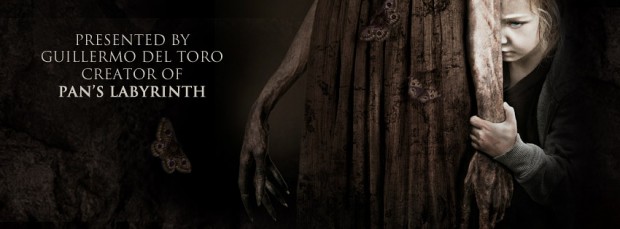
AM: Yeah, she doesn’t want to hurt her. It’s sort of a ritualistic, instinctive thing. Animalistic is the way I saw it. I don’t know how other people saw it. I heard many other people say they totally got it and some were a little confused about it. What did you think?
I did sort of understand it because Victoria said to Mama in the house that she promised not to hurt her [Annabel] so that’s what I assumed it was.
AM: Yeah, that was a crucial line there [laughs] because that’s how we understand the pact they had before. If anyone in the audience asks ‘Why didn’t Mama kill Annabel before?’ [laughs] well there we go!
It seemed like that every time Mama put her hand on Annabel. It was as if it was putting her to sleep a bit. I think it was the sound that went with it. I was curious if that was your intention or that every time that hand went on her head she was giving up.
AM: Yeah, she was [giving up] because she was beaten up. I didn’t mean for her to fall asleep, that wasn’t the intention. She doesn’t sedate her with that hand. She puts her down to send her a message. To tell her to stay there in a very animalistic way. Mama doesn’t think, it’s all instinctive for me. There’s a bit of a license there because normally ghosts are one-dimensional. The ghosts we know, they repeat the actions over and over until it becomes right. Mama is a more complex version – there is a bit of intelligence there but it’s an animal intelligence. It’s a dimension that’s a bit from the classical ghost.
Sorry, here’s a quick question that’s out of place but have you seen Evil Dead, the remake?
BM: We haven’t and we feel really bad because our friend directed it. It’s terrible but we’ve been travelling so much.
AM: The thing is, we live here in Spain, in Barcelona, and it was dubbed. They didn’t release the movie in Spain in the original language.
BM: We’re desperately waiting for the DVD or the Apple TV release so we can watch it properly.
AM: We hate dubbing! Spanish people are very used to dubbing but we are not Spanish, we are Argentinian. In Argentina they don’t dub movies. When you go to the movies you see subtitles everywhere. People are used to reading basically. [laughs]
I agree because when dubbing happens here it’s one of the most uncomfortable of things to watch.
BM: It’s brutal. It can change a good performance to be just horrible.
AM: Yeah, I called Fede and apologised. [laughs] We’ll see it on a big projector.
Well, you’re friends with Fede as well, who’s a first time feature writer-director for a big horror film. When you’re writing a script and then making a film, what are you trying to achieve? What advice can you give to filmmakers who are trying to capture a story and bring it to an audience?
AM: All I can really say is if you’re trying to make a genre movie then try to engage people emotionally first. It’s easy to say it [laughs] but that’s my recommendation. It gets people involved. Unless you’re making a slasher, where you really don’t care about them and want them to do the most gruesome of deaths you can think of – like Evil Dead… probably, there must be some identification with characters. The movies I most enjoy are the movies that move me emotionally as much as scare me. That’s my recommendation! The rest is sticking to what you like in movies because that’s one of the first things you learn; the strongest lessons you learn are things that you really feel that make you change. The real learning is when you see something that is ‘Oh man! That film!’ These things are very personal. Stick to what you know about films and what you have learned. There are a lot of things that I have learnt from Mama and there’s a lot of things I have not [laughs]. There aren’t things I like but hey, it’s my first movie. Things like that – engaging emotionally with the audience before you scare them. Be faithful to what you think works.
AM: One more thing I’d like to say to someone who is trying to make a genre movie or a horror movie is to think about things that really scare you! If it doesn’t scare you authentically then how can it scare others? How can you know that will scare anyone? Basically connecting to your inner child and knowing what you were before because when you’re a child you’re really impressed by certain things. The scariest emotions and scariest scares were when you were a child. In some cases you carry those fears with you.
BM: Andy does! [laughing]
AM: In my case it happens. I remember what scared me when I was a kid, probably most people do. If you’re making a movie, and making a horror movie, keep that in mind. Put in a movie whatever scared you as a child and still scares you.
BM: Ashley, you should write down that I’m the brave one of the two. Be sure to put that in. [laughs]
AM: It turns into a more genuine experience in the end. It works because it’s real. We’re all special but we’re not that special. Whatever scares you will scare 50% of the audience watching a scary film. Sometimes you have to look to that inner child. Of course there’s that other part which involves sophisticated and orchestrated scares but it is important to keep both directions in mind.
It’s clear that there are similarities from the short but the look had evolved a bit. Mama actually looks like some Guillermo del Toro dreams. Did he help influence her look or was it a natural progression with a bigger budget?
BM: Bigger budget!
AM: Well yeah the bigger budget because the look of Mama was entirely my vision.
BM: Guillermo was extremely respectful in that sense and he really wants, in this case Andy, to follow his instincts. If anything, he pushed himself to explore the possibilities within but Guillermo didn’t press to have any of his ideas in there. He said himself that if he had shot Mama it would’ve been a completely different movie so this is very much Andy’s creature.
AM: I think the one specific thing he said was about her teeth – that her teeth should be very thin and long. That’s something he suggested. For me, Mama was a lot of exploring and experimenting. I wanted to try my best to ensure this creature was scary. Of course we did a lot of tests to see where we were going with it. The good thing about making the movie with the money was that I could explore that character which was something I wanted to do in the short film but couldn’t because we didn’t have the money to pay for a proper effects house. It was an exchange with them. They were running me with the hours and the time so it was pretty frustrating for me. If you see the short film you will see a fairly decent creature there.
BM: The girl who played Mama in the original short was a runway model because Andy wanted somebody really thin and we cast some really thin people but the person that moved the best was a runway model. In the film, it’s actually a man.
AM: Going back to the short film, the concept is there but the execution isn’t quite… I shot the hair separately so it had that floating effect and the layer of the hair was tracked to her head – she had a bald cap with tracking marks. So the concept was there but the effects weren’t great. If you see it on a small screen it looks decent [laughs] but the moment you see it on a big screen… Ironically when you see it on the big screen, the scare is much scarier but you also see the cheap effects. [laughs] When the idea of making a feature came up, for me it was great because now I thought I could explore Mama more and do different things and try what I want with the actor. In every shot there’s a different technique being used with the actor. Sometimes he’s on the wire, rigged, sometimes he’s being used by a puppeteer. There are a lot of things we shot that weren’t used. We put him against a huge glass so when he raises his hand he puts it in the glass but we don’t see it. They looked great but when we started editing we had to take them out because they really weren’t adding to the telling of the movie. You always run out of money and you want to try more and more and more! We worked with these great guys called Mr X in Canada. We came with the idea of making digital hair because, conceptually, that hair should move in a different way from the actor. The dynamics should be slower, like floating. Essentially, this is what Mama is – she died in the lake. Mr X did a great job on the hair. It was more sophisticated than the finished effort in the short. It was two practical layers of a practical actor and a practical layer. But in the feature we did use digital hair and I think it worked quite well in most of the shots.
Are these going to be in the deleted scenes of the Blu-ray and the DVD?
BM: Yeah! We’re really excited about it. When we finished the film the editorial cut was 2 hours and 15 minutes and the running time of the movie is 1 hour 40. We had quite a few scenes that we loved very much but had to cut because they worked against the pace of the film. There are still scenes that we love and we hope people will actually enjoy them as well.
Filmmakers seem to be the best producers because they know what to add but they know the freedom they’d like themselves. Guillermo del Toro is now huge in the film business so how was it having him asking you to make something?
BM: It was mostly the biggest luxury we could have had. As a producing partner and as an enabler for us. There was no way we could have done the film with the budget we would have had without Guillermo. We will forever be indebted to him for that and for giving Andy and I a freedom to explore and to propose. He was constantly challenging us to challenge him on his ideas. That’s priceless. He really loves this role of – I’m not sure if it is this – passing the baton, allowing other people to break into the business. One of the things he said to us was that it’s our turn to do it. It’s our turn to help other filmmakers to be able break in.
AM: He said ‘I am the producer that I’d like to have.’ Which is basically someone there when you need him but, when you don’t, takes a step back and watches from behind the door.
Funny anecdote, on the first day of the shoot – it probably illustrates the thing he said about producers – it was intense but there was a lot of expectation because we were first time filmmakers. He was there to see how it all worked. I was setting up and blocking the scene with the actors and the crew was there. We were in Dr Dreyfuss’s office and suddenly as I’m talking to the actors I turn my head and see Guillermo behind the door but I see only one eye from him. Only one eye, sneaking a glance. I found that very funny. [laughs]
I would have found that quite scary haha.
AM: Well he had very big eyes.
BM: His eyes are very big but his glasses make them look bigger! [laughs]
AM: Big magnified eye watching me from the room next door!
BM: He’s a very funny guy Guillermo. Not in the funny strange way but in the funny haha way. He’ll make you laugh your ass off in any situation.
Was this [Barbara] the first time you’ve produced with others?
BM: I produced a documentary before. I’ve been producing commercials for 15 years and we’ve had our own production company, which is quite sizeable, for advertising for the past 10 years. The film business is a completely different beast. We didn’t go in with a $3m/$4m budget. It was a complex structure because it was a Spanish-Canadian co-production with an Argentinean director and a Mexican executive producer, shot in Canada. It was a very interesting circus we were running but it was an amazing experience. But of course it’s even better when the film does good business. Then the pain goes away. [laughs] As Guillermo said ‘Congratulations guys, now you get to make a second movie.’ Unlike the idea people have of ‘Oh, you’ve done well in a movie, you’re safe’ it’s not like that at all. It’s one movie at a time. Everybody remembers your last movie. That’s how we think of it.
Guillermo has said you’ve gotten your second movie but what is that going to entail? I’ve read about you possibly doing Bird Box which is a really out there premise?
BM: No, we’re definitely on Bird Box but we’re helping develop it. It’s a great book, it’s a fantastic book. That’s still a way away yet though. It’s not a simple novel to put into page for film. We’re working on that but we believe our next film is going be another supernatural thriller that we’re working on right now and writing.
AM: Roughly it’s another ghost story but in the depression era in the Southern US in a little cursed town. [laughs] It doesn’t have a name though but it’ll look sweaty! [laughs]
We’d like to thank Andrés and Barbara for their time and we patiently await their ‘sweaty sequel.’ In the meantime we’ll leave you with trailer for Mama which is released today on Blu-ray and DVD together with the short film of the same name…

